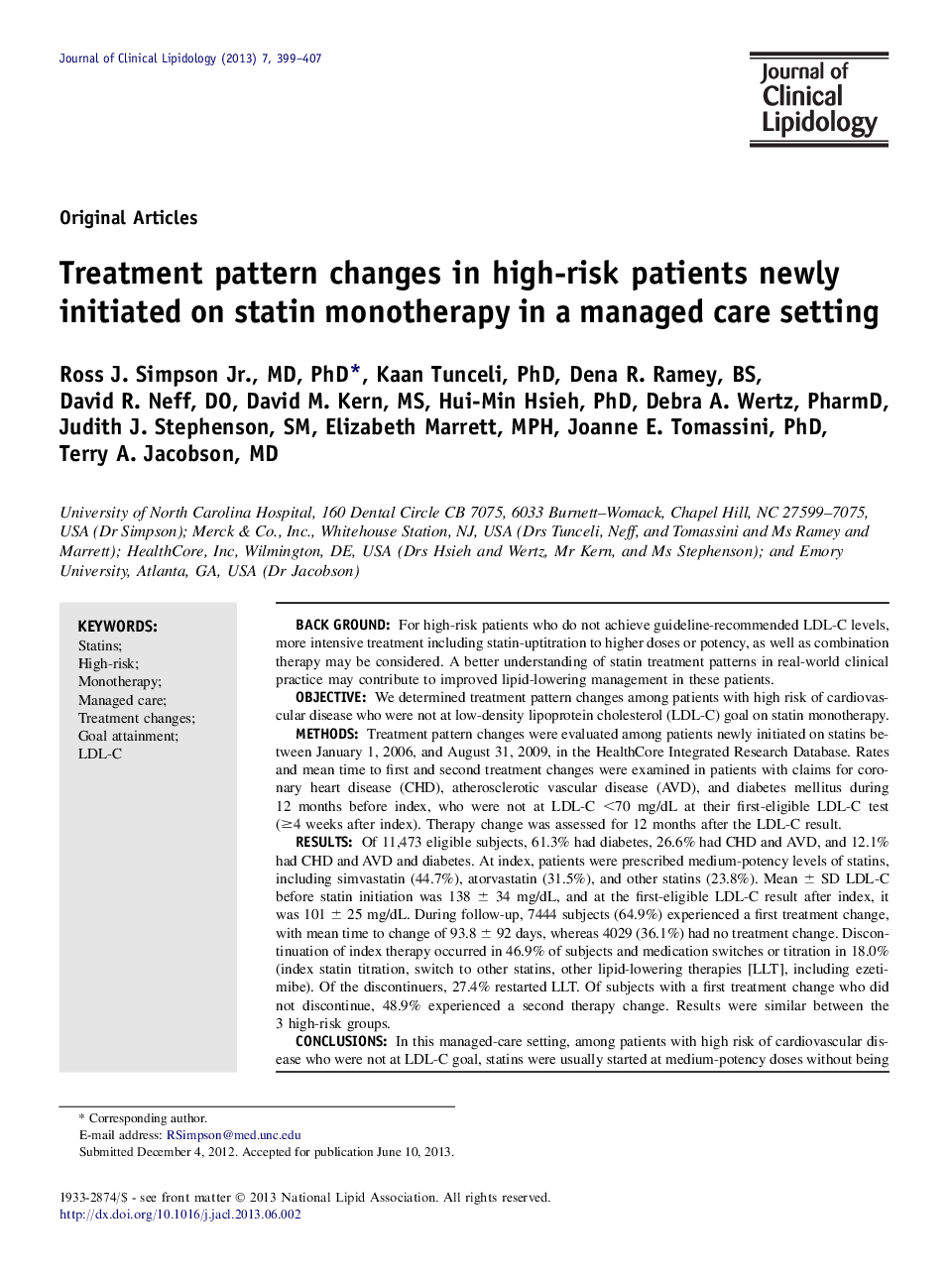| کد مقاله | کد نشریه | سال انتشار | مقاله انگلیسی | نسخه تمام متن |
|---|---|---|---|---|
| 5986080 | 1178799 | 2013 | 9 صفحه PDF | دانلود رایگان |
Back groundFor high-risk patients who do not achieve guideline-recommended LDL-C levels, more intensive treatment including statin-uptitration to higher doses or potency, as well as combination therapy may be considered. A better understanding of statin treatment patterns in real-world clinical practice may contribute to improved lipid-lowering management in these patients.ObjectiveWe determined treatment pattern changes among patients with high risk of cardiovascular disease who were not at low-density lipoprotein cholesterol (LDL-C) goal on statin monotherapy.MethodsTreatment pattern changes were evaluated among patients newly initiated on statins between January 1, 2006, and August 31, 2009, in the HealthCore Integrated Research Database. Rates and mean time to first and second treatment changes were examined in patients with claims for coronary heart disease (CHD), atherosclerotic vascular disease (AVD), and diabetes mellitus during 12 months before index, who were not at LDL-C <70 mg/dL at their first-eligible LDL-C test (â¥4 weeks after index). Therapy change was assessed for 12 months after the LDL-C result.ResultsOf 11,473 eligible subjects, 61.3% had diabetes, 26.6% had CHD and AVD, and 12.1% had CHD and AVD and diabetes. At index, patients were prescribed medium-potency levels of statins, including simvastatin (44.7%), atorvastatin (31.5%), and other statins (23.8%). Mean ± SD LDL-C before statin initiation was 138 ± 34 mg/dL, and at the first-eligible LDL-C result after index, it was 101 ± 25 mg/dL. During follow-up, 7444 subjects (64.9%) experienced a first treatment change, with mean time to change of 93.8 ± 92 days, whereas 4029 (36.1%) had no treatment change. Discontinuation of index therapy occurred in 46.9% of subjects and medication switches or titration in 18.0% (index statin titration, switch to other statins, other lipid-lowering therapies [LLT], including ezetimibe). Of the discontinuers, 27.4% restarted LLT. Of subjects with a first treatment change who did not discontinue, 48.9% experienced a second therapy change. Results were similar between the 3 high-risk groups.ConclusionsIn this managed-care setting, among patients with high risk of cardiovascular disease who were not at LDL-C goal, statins were usually started at medium-potency doses without being titrated up, whereas nearly one-half had a discontinuation of LLT within 12 months. These treatment patterns indicate the need for better patient and provider education as well as other system-wide modifications to improve medication adherence.
Journal: Journal of Clinical Lipidology - Volume 7, Issue 5, SeptemberâOctober 2013, Pages 399-407
